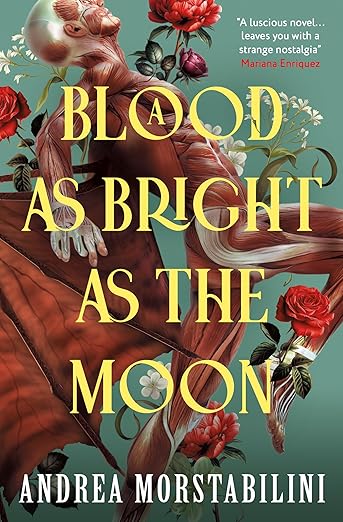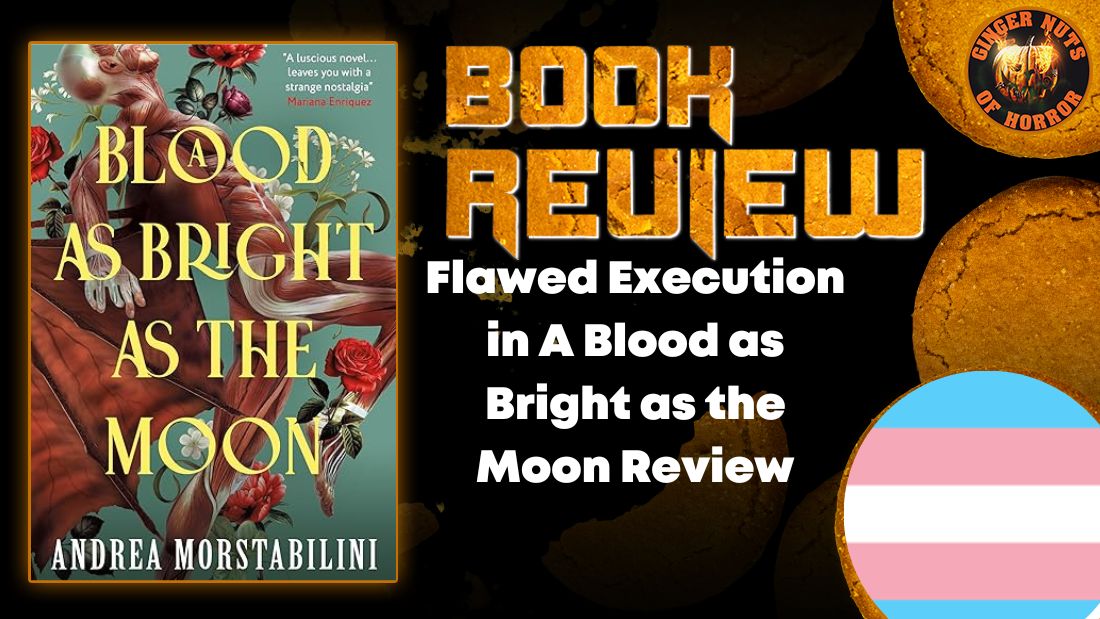
Andrea Morstabilini’s A Blood as Bright as the Moon ambitiously attempts to blend gothic horror, queer romance, and existential drama but ultimately struggles under the weight of its well-intended aspirations. While the novel’s premise, a vampire clan plotting to escape to the moon while evading a secret society, is undeniably imaginative, its execution falters due to structural inconsistencies, tonal whiplash, flawed logic, an inability to pin down a sense of time, and underdeveloped character dynamics.
The fragmented storytelling, which shifts perspectives and timelines without clear transitions, was somewhat confusing. It also added to one of my biggest criticisms of A Blood as Bright as the Moon . Its inability and failure to have a sense of time and place.
Until you reach a passage about a third of the novel, you would be forgiven for thinking that A Blood as Bright as the Moon was set in the 18th century or thereabouts. Possibly fueled by our plucky band of vampires living in Frankenstein’s castle, but also fueled by the author’s attempt at gothic prose. However, Ambrose then describes how all music apart from one composer is banned in the castle, and they secretly listen to the latest Arcade Fire album.
I have to admit it was incredibly jarring, and it threw me out of the story, and that’s without even taking my dislike for Arcade Fire into account.
And as we move through the narrative, this sense of being out of time and place continues. Especially when we get to laboratory scenes. I get what the author was trying to do regarding making it feel all gothic, but the execution was so all over the place I struggled to keep on reading.
While the prose is poetic, the disjointed structure of the narrative of A Blood as Bright as the Moon undermines the emotional stakes, making it difficult to invest in Ambrose’s internal conflict or the urgency of the Royal Diurnal Society’s threat. The pacing drags significantly in the middle sections, with lengthy descriptions of settings and vampiric lore overshadowing plot progression.
The Royal Diurnal Society is another issue this book addresses. What could have been a great concept and a significant threat to the vampires instead feels like a group of older men arguing over trivial matters while trying to conduct vivisection on the vampire. The potential threat posed by the Society could have been much more impactful, but ultimately, it feels flat and underutilised.
At this point, I have to praise the author’s use of them as a powerful metaphor for homophobia; this was why I kept reading the novel. It was a thoughtful move and, at times, a moving description of the battles that our LGBTQ friends face. If only the author had focused more on this than on trying to create a dreamy gothic atmosphere, then A Blood as Bright as the Moon might have been a far better novel.
By this point, I was speed-reading, so I may have missed some key points, but the science behind the vampires was also annoying. Ambrose is staked, and it only shuts down his nervous system, but another vampire is killed by being shot in the stomach. I was shaking at this point.
While the author is trying to do something new with vampires and their lore, and I have to admit the reason for them drinking blood is a unique and fun take, the rest of the mythology and “science” seem totally at odds with each other.
Much like the whole novel itself A Blood as Bright as the Moon is a set of great ideas that end up fighting with each other and contradicting each other. I still don’t understand the entire wings thing and how they work in getting the vampires to the moon.
Morstabilini’s juxtaposition of lyrical beauty with visceral horror feels jarring rather than purposeful. While intended to highlight the brutality of the vampire-human dynamic, these scenes risk alienating readers seeking cohesion or thematic depth. The novel’s queer themes are often sidelined by the narrative flaws and overly descriptive language reducing their emotional impact.
Ambrose’s yearning for humanity and Martin’s clinical detachment hold potential, but their relationship lacks meaningful development. Their interactions oscillate between stilted intellectual exchanges and sudden, unconvincing intimacy, leaving their bond feeling more like a plot device than a genuine connection. Secondary characters, such as the enigmatic clan leader Regina, are reduced to archetypes, their motivations and backstories glossed over in favour of atmospheric world-building.
A Blood as Bright as the Moon’s blend of vampire mythology, scientific curiosity, and queer allegory is commendable but overstretched. The moon-colonisation subplot, while unique, is so underexplored it almost reads as a filler added to make it a novel-length book, and the Royal Diurnal Society’s sinister agenda feels undercooked, serving more as a vague antagonist than a compelling force.
A Blood as Bright as the Moon is a novel of conflict, stunning prose paired with structural chaos and inventive ideas marred by uneven execution. While it occasionally shines in its exploration of belonging and sacrifice, the book’s flaws overshadow its potential. It is a flawed experiment in gothic horror that prioritises style over substance.
A Blood as Bright as the Moon by Andrea Morstabilini
A vampire, desperately torn between worlds, is hunted down by a secret society bent on his destruction, in this timeless and unsettling queer gothic horror, perfect for fans of T. Kingfisher and Silvia Moreno-Garcia.
Frankenstein, Germany.
Ambrose, a young vampire, lives a life secreted away from the modern world with the rest of his clan, all of them under the spell of the charismatic Regina, who spins stories of salvation for their kind. Their grand plan? To build makeshift wings and fly to the moon where a safe haven awaits for all vampires.
But Ambrose harbours a secret: he is not ready to abandon the earth, and he is in contact with a human who believes he can be saved. As the rest of his kind prepare to flee their home, Ambrose is torn between loyalties.
However something else is on the horizon. The Royal Diurnal Society – a group with sinister plans for vampires – are closing in, and if Ambrose isn’t careful, he could find himself at the centre of a terrifying and mysterious experiment.
Further Reading
For fans of horror literature, The Ginger Nuts of Horror website is an essential destination that should not be overlooked. This platform offers a dedicated horror book review section that caters specifically to the needs of horror enthusiasts. With its unique blend of insightful critiques, expert recommendations, and a vibrant community, the site serves as a treasure trove for anyone seeking their next spine-chilling read.
One of the standout features of the horror book review section is its diversity. Readers can discover everything from classic horror novels to contemporary indie gems, ensuring that there’s something for everyone. Each review is thoughtfully penned, providing not just a summary but also a deep dive into the themes, writing style, and overall atmosphere of the works. This allows readers to gauge whether a particular book aligns with their preferences.
For those passionate about horror literature, checking out this section is a must!


